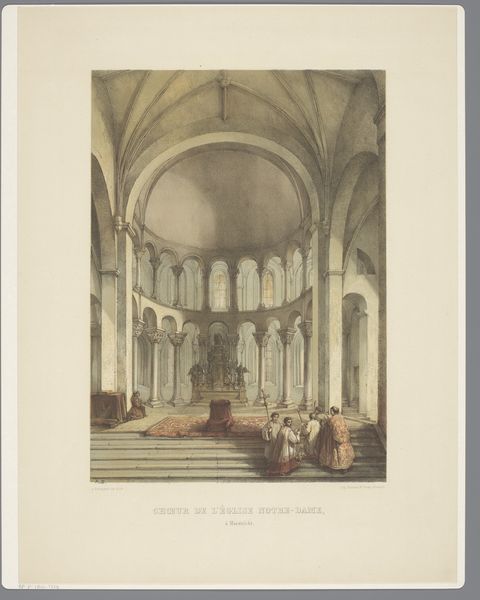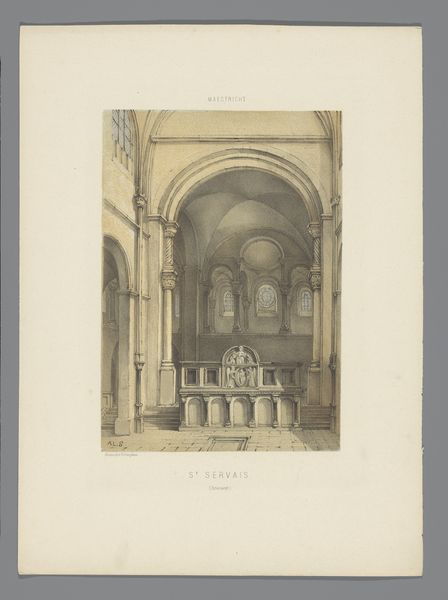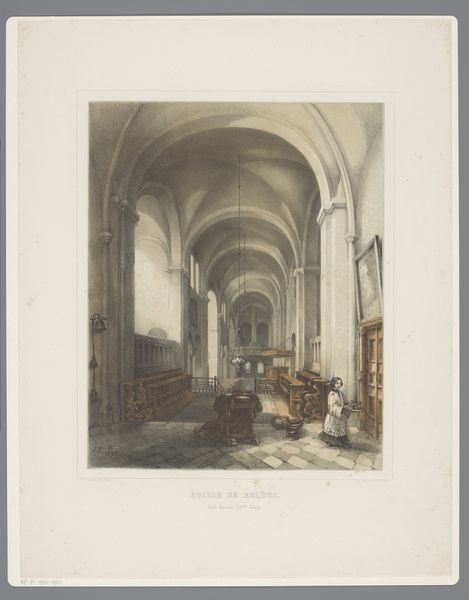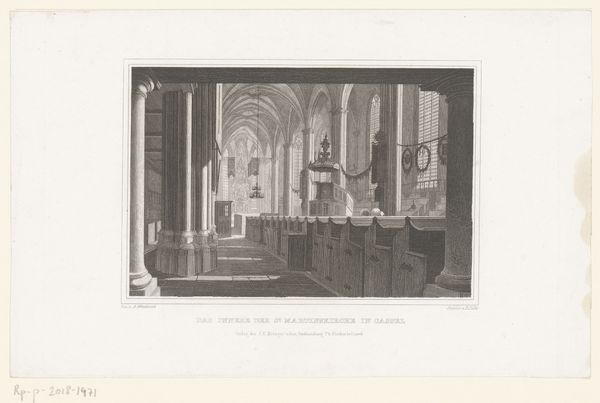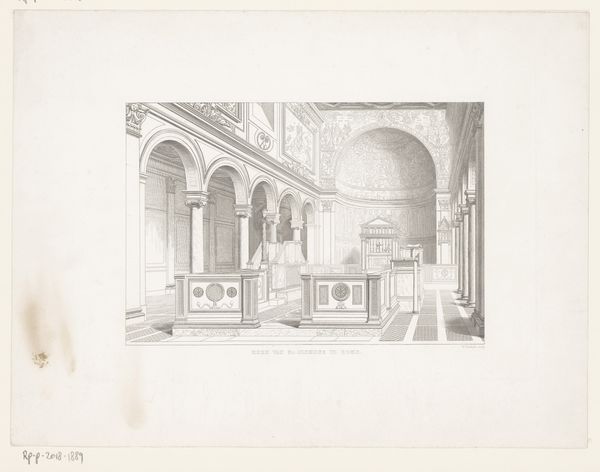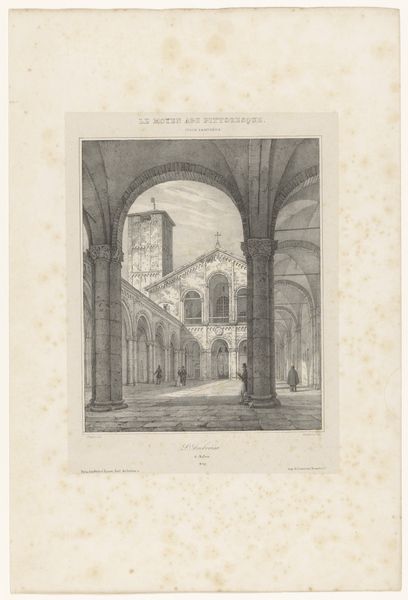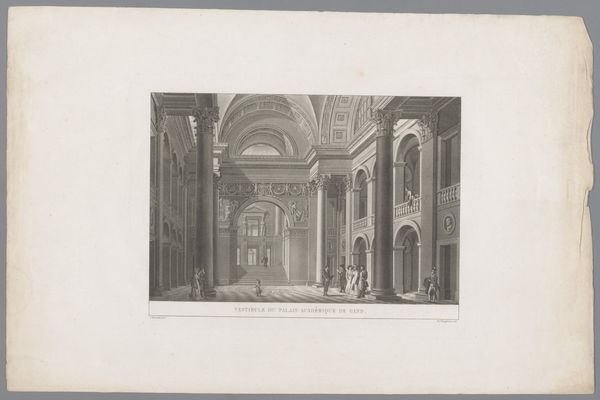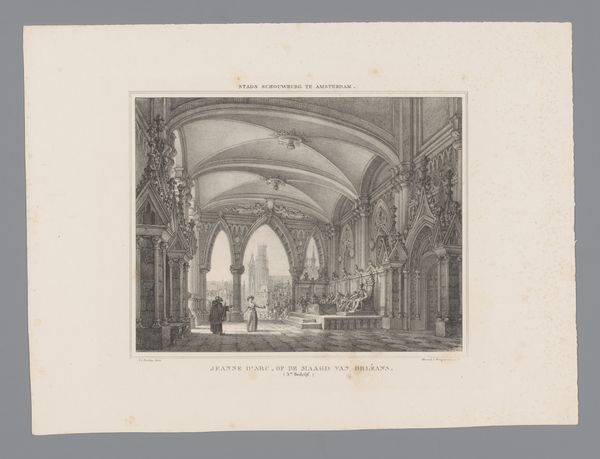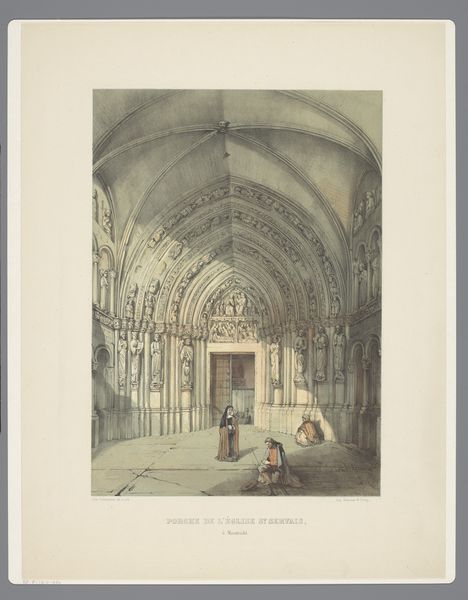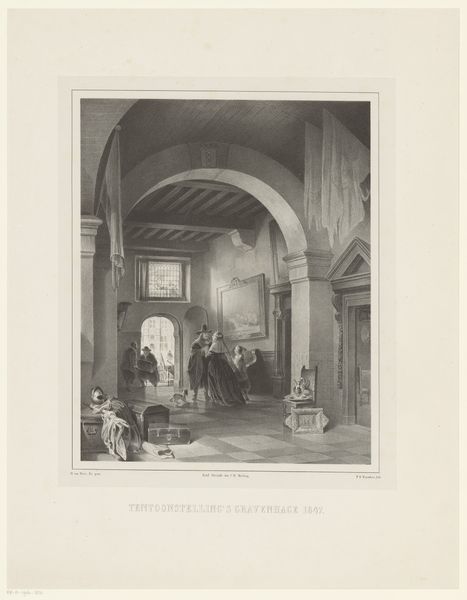
Dimensions: height 554 mm, width 423 mm
Copyright: Rijks Museum: Open Domain
Curator: Here we have Alexander Schaepkens' "Interior of the Basilica of Saint Servatius in Maastricht," created in 1855. The Rijksmuseum holds this print. Editor: It's remarkably serene. The light, filtered and soft, creates a quiet, almost contemplative mood despite the grand architecture. Curator: Note the composition, it is expertly using linear perspective to draw our eyes to the altar. How does that interplay with your read of the piece? Editor: The figures in the foreground—almost doll-like, they underscore a theatricality. Are they intended as worshippers, or perhaps more allegorical to something else, something related to the Saint? Curator: That's the key to the social and political history of church architecture at the time, which often was intertwined with civic pride and specific power structures. Saint Servatius Basilica has always been important in this area. The people shown in the illustration suggest a relationship between the viewer and the depicted holiness. Editor: Indeed. Looking at Schaepkens’ use of pale watercolours, they provide not just visual details, but a narrative of faith and the basilica's importance to society as a sacred space in the community's consciousness. What else can you say about the formal attributes of this "drawing," considering the somewhat "pale palette," that has a calming, light tone? Curator: Precisely, this "drawing" seems more like a preliminary watercolour wash. He has controlled the blending masterfully. Editor: Its function and importance at the time are clearly visible, in my view. That he chose this "light colored" hue, adds a further sense of time to the Basilica. Curator: So, for me, "Interieur van Sint-Servaasbasiliek te Maastricht" captures a place both earthly and spiritual, but its appeal lies mainly in Schaepkens' handling of perspective, composition and light that he achieved from watercolors. Editor: And for me, Schaepkens’s work does much more than reproduce architecture; it presents an entire micro-society—a slice of the era, captured for generations to observe and learn from and where devotion finds its sanctuary.
Comments
No comments
Be the first to comment and join the conversation on the ultimate creative platform.
